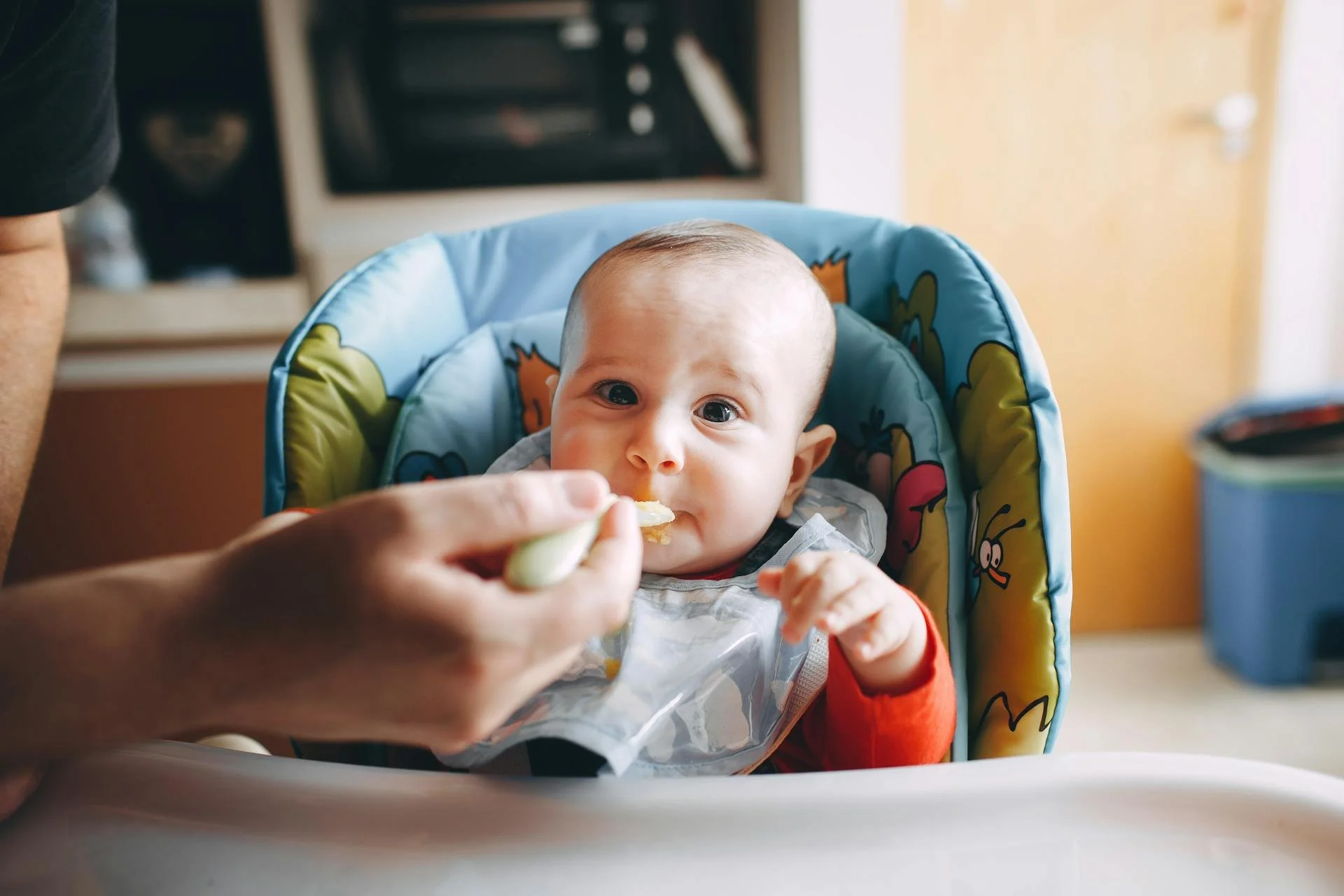What Are 5 Signs My Baby Is Ready For Solids?
Signs My Baby is Ready for Solids
As a new parent, one of the most exciting (and nerve-wracking) milestones is watching your baby show signs that they might be ready for their very first taste of solid food.
You’ve likely wondered, “What are the signs my baby is ready for solids?”
The truth is, every baby develops at their own pace, and readiness isn’t just about age. It’s about specific developmental cues they give you.
Recognizing these cues can help you confidently (and safely) begin this next stage of your baby’s growth journey.
In this guide, we’ll explore how to be confident in knowing the signs my baby is ready for solids, what each one means, and how to approach this exciting transition.
This way you can help support healthy development and lifelong positive eating habits.
Baby Can Sit Up with Minimal Support
One of the very first signs that your baby is ready for solids is their ability to sit upright with little or no support. This posture matters more than you might think.
It helps prevent choking and allows your infant to swallow food safely.
If your little one can sit steadily in a high chair or on your lap, keeping their head and neck straight, that’s a green light. Their muscles are strong enough for the challenge of eating solids.
Typically, babies develop this skill around 6 months old, but every child is unique. Some might show this ability a bit earlier or later, depending on their motor development.
Do a quick “sitting test.” Place your infant in a supportive chair and see if they can hold their position for several seconds without slumping.
If they can, they’re likely ready to start trying small tastes of soft foods.
This milestone also signals that the digestive system is maturing. It prepares them to process more complex nutrients beyond breast milk or formula.
By waiting until your baby can sit up independently, you’re helping them build confidence and safety during mealtime. Two key elements for success when starting solids.
Introducing Baby to Solid Foods
Baby Shows Interest in What You’re Eating
Have they started staring at your plate? Or perhaps reaching for your spoon, or opening their mouth when you take a bite?
These are classic signs that they’re showing interest in food. And it’s one of the clearest indicators that they’re ready to start exploring solids.
This curiosity isn’t just adorable, it’s developmental. Around 6 months, babies begin to notice family routines and want to participate.
When your baby watches you eat and mimics your mouth movements, it shows growing awareness and coordination. They’re learning that eating is a social experience as much as a physical one.
If you notice your munchkin reaching toward your meal, try offering them a safe, soft starter food like pureed carrots, mashed banana, or iron-fortified single-grain cereal. Watch how they react.
Do they lean in for more or push it away?
These small moments of exploration are how your baby learns about taste, texture, and self-regulation. Encouraging this interest helps set the foundation for introducing baby to solid foods.
The Tongue-Thrust Reflex Has Disappeared
In the first few months, babies have a natural tongue-thrust reflex. Meaning they instinctively push anything that enters their mouth right back out.
This reflex helps protect them from choking before they’re ready to handle solid foods. However, when your infant starts losing this reflex, it’s a sign their mouth and swallowing skills are developing enough for solids.
You can test this gently by offering a tiny bit of puree on a spoon. If your baby pushes it out repeatedly, they may still have a strong reflex and need a little more time.
If they close their mouth around the spoon and try to swallow, that’s a great indicator that they’re ready to start solid foods safely.
This change usually occurs between 4 to 6 months old. Once the tongue-thrust reflex fades, babies can begin learning how to move food from the front to the back of their mouth.
A key step in developing chewing and swallowing skills. Patience here pays off.
Forcing solids too early can cause frustration or discomfort. Waiting until your baby naturally loses this reflex ensures a smoother, more enjoyable transition for everyone.
Starting Solids for Babies
Baby Has Good Head and Neck Control
Strong head and neck control is another must before starting solids for babies.
When your baby can hold their head steady without wobbling, it means their muscles are developed enough to coordinate swallowing safely.
This also prevents choking and allows them to sit comfortably in a high chair during feeding. Try sitting your baby upright on your lap.
If they can keep their head aligned and turn it toward or away from the spoon, that’s a good sign.
Babies who lack this control may struggle to manage food in their mouths, increasing the risk of gagging. It’s best to wait until this skill is fully developed before offering solids.
Head control also goes hand-in-hand with hand-eye coordination. You may notice your baby reaching for the spoon or bringing objects to their mouth.
These small but important movements show readiness for self-feeding later on. Encouraging them to explore food at their own pace builds independence, confidence, and curiosity during mealtimes.
Baby Seems Hungry Even After Milk Feedings
One of the most telling signs of starting solids for babies is when they seem unsatisfied after regular breast milk or formula feedings.
Are they suddenly finishing full feeds and still showing hunger cues, like sucking on their hands, leaning toward your plate, or crying shortly after a feeding?
It could mean their nutritional needs are increasing. By about 6 months of age, babies’ iron stores begin to decrease.
Their growing bodies need extra nutrients that solid foods can provide like iron, zinc, and healthy fats.
Introducing iron-rich options like pureed meats, lentils, or fortified cereals can help support their development. These are a few safe first foods for baby.
It’s important to remember that solid foods complement milk feedings, not replace them at first. Breast milk or formula should remain the main source of nutrition for the first year.
Solids are more about exploration than quantity in the beginning, helping your baby practice new skills and discover new flavors safely.
Safe First Foods for Baby
Watch Your Baby, Not the Calendar
Introducing baby to solid foods requires the understanding that everyone is different.
There’s no single “perfect” time to start solid foods. What matters most is watching for cues and readiness signs. Dust off that high chair and get it ready to go.
When your baby can sit up, shows interest in food, loses the tongue-thrust reflex, has good head control, and still seems hungry after milk feedings.
You can feel confident they’re ready for this exciting new stage.
Starting solids is a journey filled with messy faces, funny reactions, and precious milestones. Take it slow, offer a variety of flavors and textures, and enjoy the process together.
The goal isn’t just feeding, it’s helping build a healthy relationship with food that lasts a lifetime. Safe first foods for baby will come naturally when they’re ready.
Parent Homework:
Assignment #1: Try a “First Foods Day” this week. Pick one soft, safe food and let your baby explore it during a calm, happy mealtime.
Assignment #2: Keep a baby feeding journal to track what foods they enjoy and how they respond. This helps you spot any patterns, preferences, or possible sensitivities early on.
RELATED: Baby Food Recipes



